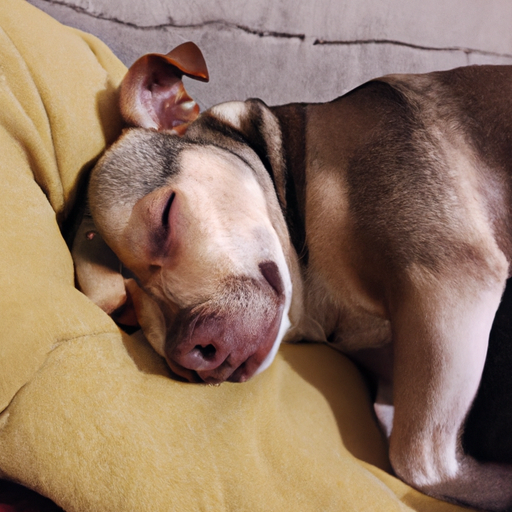Table of Contents
- Introduction
- Canine Sleep Patterns Explained
- Why Do Dogs Put Their Ears Back When Sleeping?
- What Other Body Language Should You Look Out For?
- How To Better Understand Your Dog’s Sleep Habits
- FAQ
Introduction
As a caregiver to a beloved canine companion, you’ve likely noticed a myriad of behaviors that make you curious – and one of them might be when your dog’s ears go back while they’re sleeping. Is this normal? Should you be worried? Or is it just part of their quirky charm?
Canine Sleep Patterns Explained
Just like humans, dogs enter different stages of sleep, including REM (Rapid Eye Movement) and non-REM sleep. Here’s a typical progression:
- Wakefulness
- Non-REM sleep
- Light sleep
- Deep sleep
- REM sleep
During REM sleep, dogs may exhibit various behaviors like twitching, whining, or even moving their legs as if running. This is also the stage where their ears might move back.
Why Do Dogs Put Their Ears Back When Sleeping?
When dogs put their ears back during sleep, it’s often a sign of them being in a deep, comfortable sleep. Here’s why:
-
Comfort: Just as you might adjust your position for comfort when sleeping, dogs do the same. Pulling their ears back could relieve pressure or simply feel better.
-
Protection: In the wild, dogs would pull their ears back to protect them from damage or debris. Though your dog is safely indoors, this instinctual behavior persists.
-
Body Temperature Regulation: Dogs lose a lot of heat through their ears. Pulling them back may help to conserve body heat during sleep.
What Other Body Language Should You Look Out For?
In addition to ear position, other body language can give you insight into your dog’s sleep quality:
- Twitching: Mild twitching can be a sign of REM sleep, but violent jerks could indicate a nightmare or seizure.
- Tail Position: A relaxed, unfurled tail generally indicates a good sleep.
- Breathing: Rapid or labored breathing might signal distress or health problems.
How To Better Understand Your Dog’s Sleep Habits
Observing your dog’s sleeping habits can be an illuminating window into their wellbeing. Here are some steps to better understand what’s normal for your pet:
- Monitor their sleep: Keep track of your dog’s sleep patterns and behaviors. Any drastic changes should be reported to a vet.
- Provide a comfortable environment: A good bed and a quiet, safe space can help ensure quality sleep.
- Regular health checks: Regular vet visits can help identify any underlying health issues that might be affecting sleep.
FAQ
Why does my dog move his ears when sleeping?
Dogs often move their ears during sleep due to dreams or reflexive responses to sounds in their environment. It’s typically not a cause for concern.
My dog’s ears are always back, is that normal?
Yes, some dog breeds naturally have their ears back or down. However, if your dog’s ear position changes suddenly or is accompanied by other signs of distress, consult a vet.
Can a dog’s sleep position tell me about their health?
Yes, a dog’s preferred sleep position can indicate their comfort and security. For instance, sleeping on their back with paws in the air can mean they’re feeling particularly safe and comfortable.
What should I do if my dog seems uncomfortable during sleep?
If your dog seems to be in distress during sleep, it’s best to consult a vet. They can rule out health issues like sleep disorders or pain.
How much sleep does a typical dog need?
Depending on their age, breed, and health, dogs typically sleep for 12-14 hours a day. Puppies and older dogs usually require more sleep.
By paying attention to your dog’s sleep behaviors and understanding what’s normal, you can help ensure they’re getting the rest they need for a happy, healthy life.



